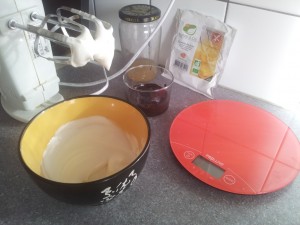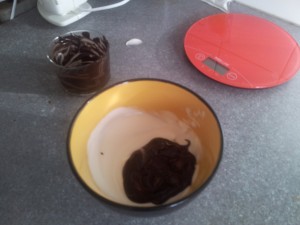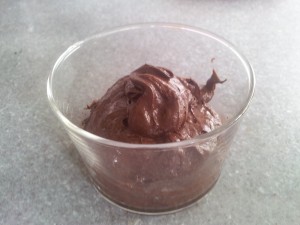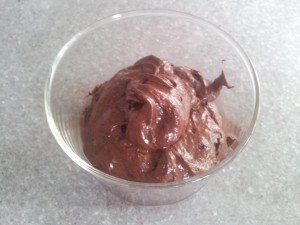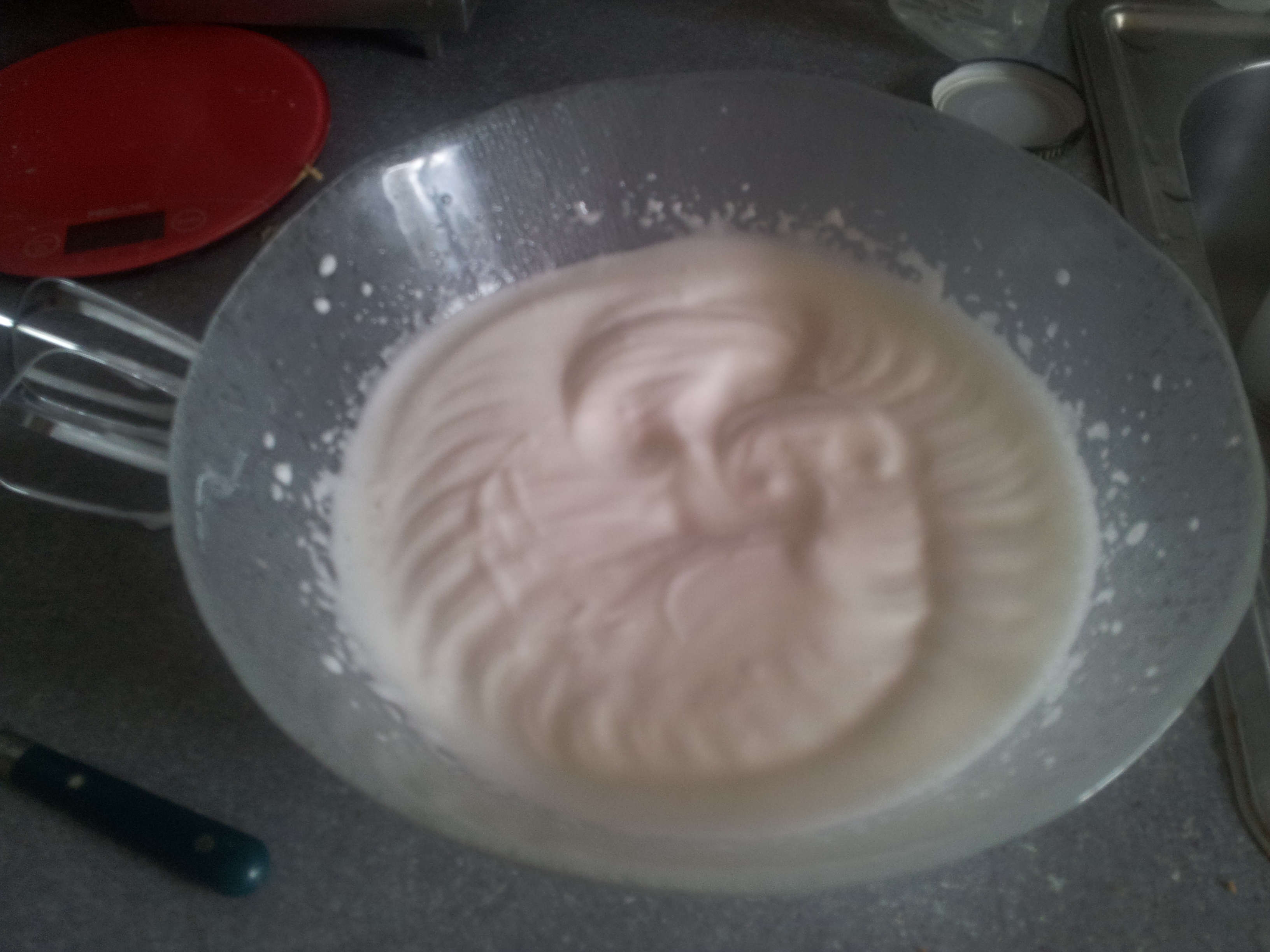Now you’re aware of whipped vegan whites. Why not eating a good old chocolate foam ? 🙂
Ingredients : (for 1 ramekin)
- 50g chikpea’s white
- 1 teaspoen shaved-packed guar gum
- A few drops of lemon juice (or cream of tartar)
- 60g chocolate (I like foams strong, with no sugar at all…)
- Options :
- Oilseed’s purees/coconut or palm oil/oil (for fat and taste) – Recommendation: about 20g
- Sugar – Recommendation : about 20g
- Flavor
You may have understood by now. For me, nothing’s better than a very strong chocolated foam, so, I leave you options to suit your tastes (chocolate, cream, puree, sugar …)
Preparation:
- Mix white and guar gum, and Beat those until stiff. Once the whipped white becomes white and a little frothy, add a few drops of lemon juice
ATTENTION, the texture should be airy, light, evanescent. If you beat for too long, it’ll become as stiff as a marshmallow : this is unpleasant to eat! (for a foam), too few, and it’ll become sticky !
If the texture is not going as stiff as you’d wanted, add sugar, but caution : it can too stiff within 10 seconds!
- Mix melted chocolate with your “options”
- Mix very tenderly with the foam, place in a ramekin and avoid eat on, it’s better after a few hours in the fridge!
Then you’re right : I proposed a recipe for one person, but chocolate’s foam is a solitary pleasure!? No? Well, then triple the dose and you will have what make happy 4 of yours. And if there are children in the number, really, do not hesitate to add cashew puree, soy cream and sugar to sweeten chocolate!
I look forward to know your alternatives!

